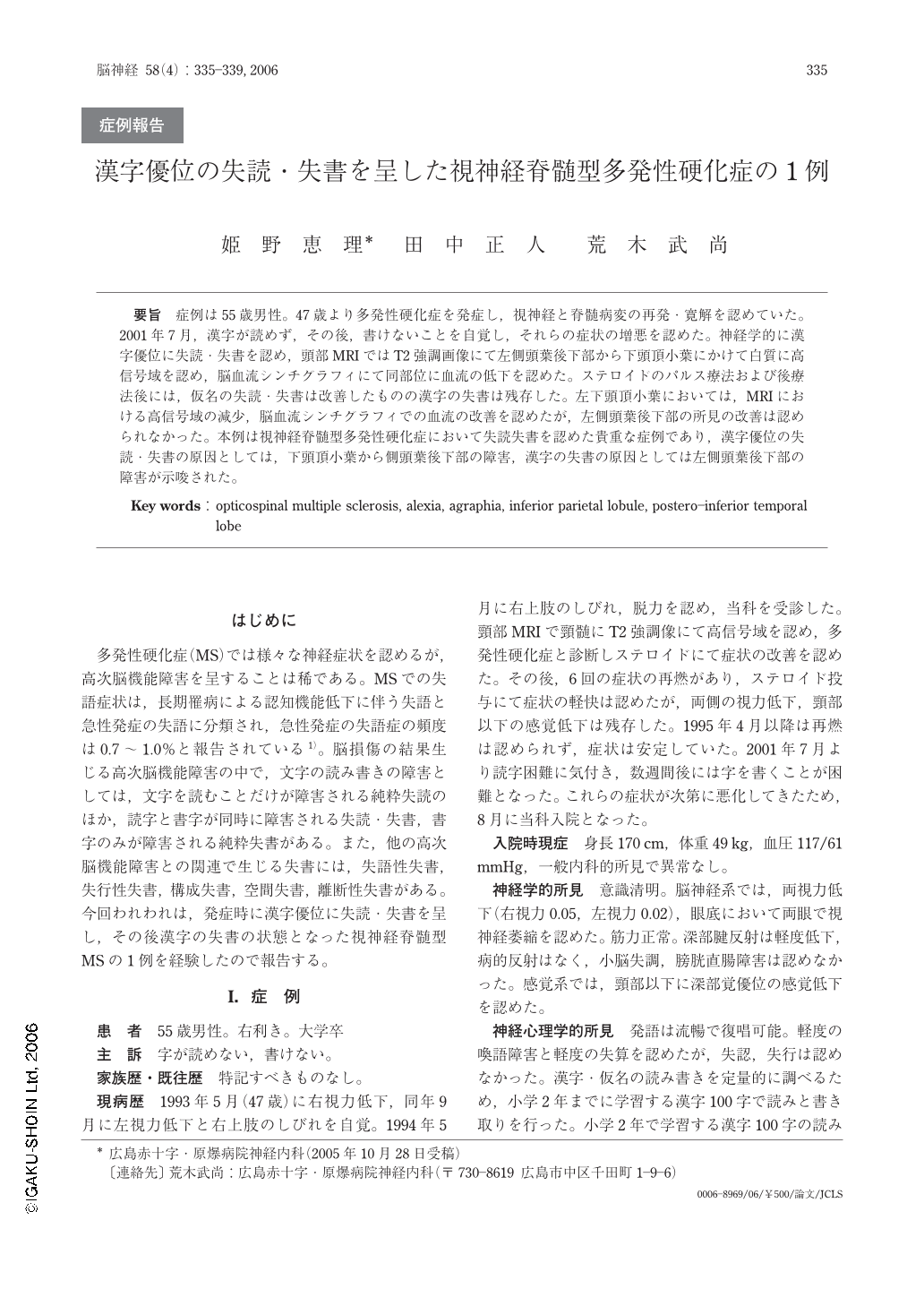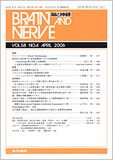Japanese
English
- 有料閲覧
- Abstract 文献概要
- 1ページ目 Look Inside
- 参考文献 Reference
症例は55歳男性。47歳より多発性硬化症を発症し,視神経と脊髄病変の再発・寛解を認めていた。2001年7月,漢字が読めず,その後,書けないことを自覚し,それらの症状の増悪を認めた。神経学的に漢字優位に失読・失書を認め,頭部MRIではT2強調画像にて左側頭葉後下部から下頭頂小葉にかけて白質に高信号域を認め,脳血流シンチグラフィにて同部位に血流の低下を認めた。ステロイドのパルス療法および後療法後には,仮名の失読・失書は改善したものの漢字の失書は残存した。左下頭頂小葉においては,MRIにおける高信号域の減少,脳血流シンチグラフィでの血流の改善を認めたが,左側頭葉後下部の所見の改善は認められなかった。本例は視神経脊髄型多発性硬化症において失読失書を認めた貴重な症例であり,漢字優位の失読・失書の原因としては,下頭頂小葉から側頭葉後下部の障害,漢字の失書の原因としては左側頭葉後下部の障害が示唆された。
Alexia with agraphia is very rare symptom in multiple sclerosis. We present a patient of opticospinal multiple sclerosis with kanji-predominant alexia with agraphia. A 55-year-old, right-handed man was admitted to our hospital because of difficulty in reading and writing in August 2001. The patient had been diagnosed as having relapsing-remitting opticospinal multiple sclerosis eight years prior to admission. Language examination showed alexia with agraphia predominantly affecting kanji and also mild naming difficulties, but a good comprehension and a normal repetition. T2-weighted MRI demonstrated hyperintensity area in the left temporo-parietal lobe, involving the white matter beneath the postero-inferior temporal lobe and inferior parietal lobule. On brain SPECT, low blood perfusion was observed in the left temporo-parietal regions. Although agraphia for kana and alexia for both kana and kanji improved after steroid therapy, agraphia for kanji did not improve. After the treatment, high intensity area of inferior parietal lobule was disappeared on MRI, and the hypoperfusion of inferior parietal lobule on brain SPECT was also improved, but the lesion of left postero-inferior temporal lobe did not show any remarkable changes. We considered that the kanji-predominant alexia with agraphia was due to the lesions of left inferior parietal lobule and postero-inferior temporal lobe, and agraphia for kanji was due to the lesion of left postero-inferior temporal lobe.

Copyright © 2006, Igaku-Shoin Ltd. All rights reserved.


